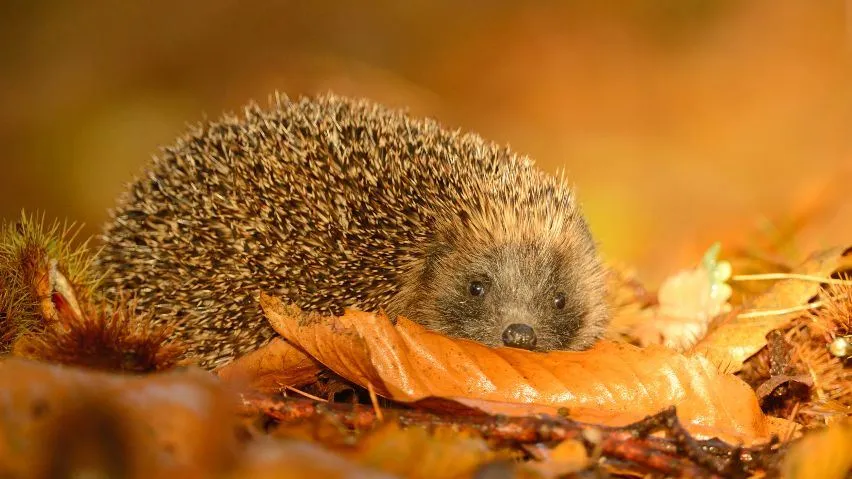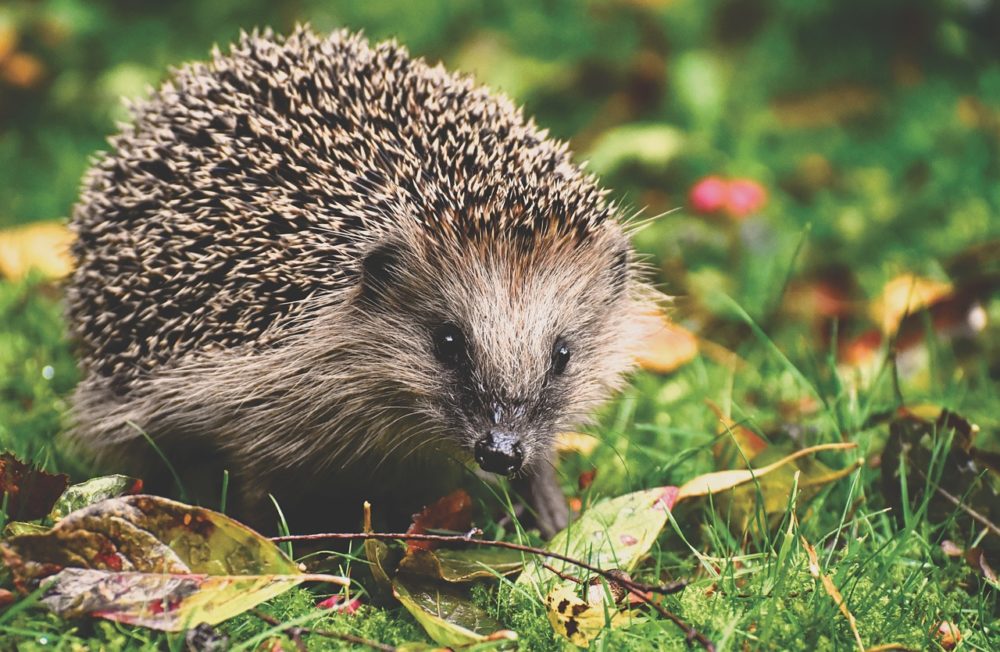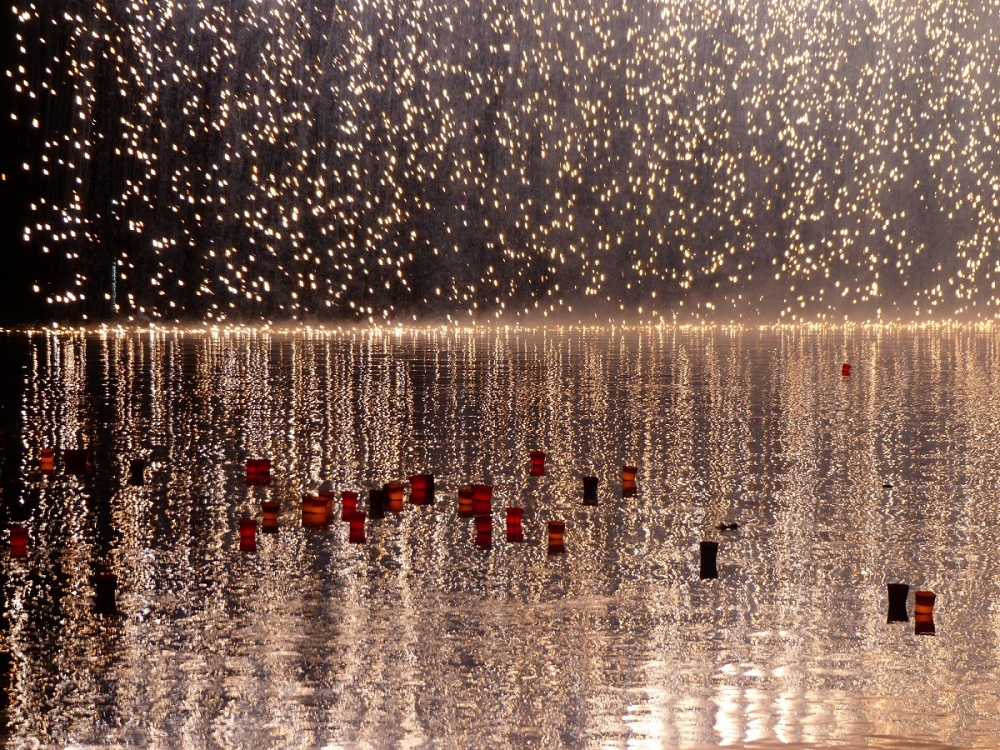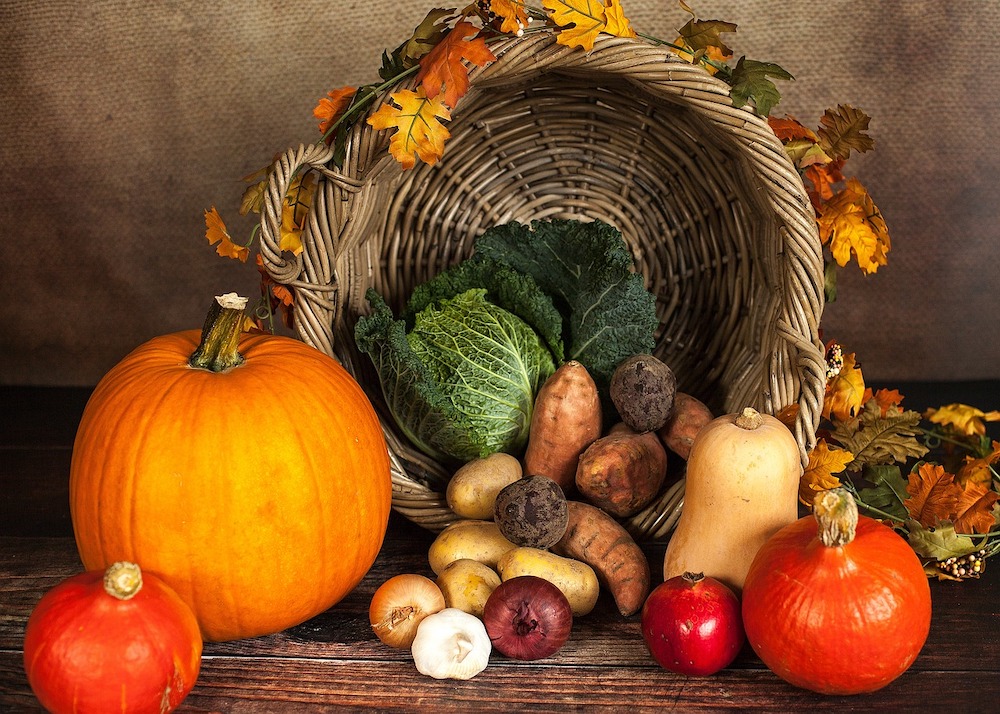Charity offers advice to protect wildlife this November

A charity has offered advice to the public on how to enjoy Bonfire Night without giving wildlife a fright – and also some suggestions on what to do with any leftover pumpkins from Halloween.
According to the RSPB, as the days get colder and the nights draw in, Hedgehogs will be looking for a cosy place to snuggle down and sleep away the coming winter – and to unsuspecting hogs, your bonfire pile might seem like the perfect place.
Every year, wildlife rehabilitation centres care for Hedgehogs that have been rescued from the flames of bonfires, but many aren’t so lucky.
The good news is that it’s really simple to keep house-hunting Hedgehogs safe while still enjoying the warming glow of a fire this Bonfire Night.
If you can, wait until the big day to build your bonfire so that Hedgehogs, and other wildlife like frogs and toads, don’t have time to move in before you light it.
Relocate
If you’ve already built your bonfire, the safest way to check for any prickly residents is to move the material to a new patch of open ground, away from hedges, trees and other vegetation.
If that’s not possible, don’t worry – you can carefully lift up sections of the pile using a broom handle and have a peek instead. Just remember not to use the pointy end of a fork or spade!

If you do come across a Hedgehog sheltering inside, use a pair of thick gloves to gently pick it up and relocate it to a safe, quiet area well away from the bonfire site. Even better, you could provide a ready-made Hedgehog house, like the ones on the RSPB shop, or build your own by following their handy guide.
When the time comes to light your bonfire, it’s best to start from one side, rather than the middle, to give any wildlife you might have missed time to escape.
Keep wildlife in mind
Watching the glitter and glow of fireworks lighting up the sky is an autumn tradition for many of us, but not everyone enjoys the loud bangs that accompany them – including wildlife.
If you’re planning to hold a fireworks display it’s really important to make sure you’re well away from sensitive areas, like nature reserves, and trees, hedges and thick vegetation where birds, bats and other wildlife might be sheltering.

The loud bangs and flashes of fireworks can spook wildlife and result in them hurting themselves, or using up the precious energy stores they need to see them through the winter.
Although most birds won’t be nesting in autumn, it’s also best to avoid setting off fireworks near nest boxes as some birds, including Wrens and Blue Tits, will roost in these during cold weather.
In fact, one nestbox was found to contain more than 60 Wrens, all snuggled together for warmth!
Halloween decorations
With Halloween over, the chances are you might still spot spooky looking spiders web decorations draped over garden hedges and dangling from doorways.
Although they’re fake, these webs can catch real-life prey, with birds and other wildlife getting tangled in the fibres, so they’re best avoided.
Next year, try hanging them inside your windows instead, for an equally creepy display, without the risk to wildlife.
Leftover pumpkin
Each year, an estimated 10 million pumpkins are grown for Halloween in the UK, with most eventually ending up in landfill – but throwing away your ghoulish gourd isn’t the only option.
Pumpkin is an incredibly versatile ingredient, so why not get creative in the kitchen? From warming autumnal soups and stews, to traditional pumpkin pies and even pumpkin spiced lattes, there are lots of tasty ways to use up your pumpkin’s innards – the BBC Good Food website has lots of recipes to try.

Many birds will also enjoy snacking on pumpkin seeds. Roast them in the oven to dry them out (without salt, spices or oil), then crush them into pieces to make them easier for smaller birds to eat. You can then scatter the seeds outside or mix them with other seeds in a hanging feeder.
You could even recycle your pumpkin into a ‘snack-o-lantern’ for birds, as Mey Duek from the RSPB Wildlife Team explains: “Don’t let your pumpkin go to waste after the Halloween festivities this year – instead you can share the love with the feathered friends in your garden by turning your pumpkin into a temporary bird feeder.”
All you need to do is chop your pumpkin in half, scoop out most of the flesh to create a hollow, add a handful of bird seed and then hang it from a tree or pop it up somewhere high.
Remember to only use a fresh, firm pumpkin and remove the feeder as soon as it starts to go soft or mouldy.
It’s really important to keep your feeder out of reach of hungry Hedgehogs too, as eating pumpkin can give them an upset tummy, which could lead to potentially fatal dehydration.
Once your pumpkin is on the turn, the best place for it is a compost heap. If you don’t already have one, now’s the perfect time to create one by following their step-by-step guide.
Not only will it provide you with lots of lovely homemade compost to help you grow veggies and flowers, it’s great for wildlife too!
If you’d like more ideas for how to help wildlife this autumn, try our Nature on Your Doorstep activities.
Support our Nation today
For the price of a cup of coffee a month you can help us create an independent, not-for-profit, national news service for the people of Wales, by the people of Wales.




